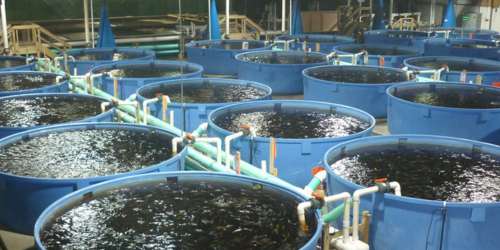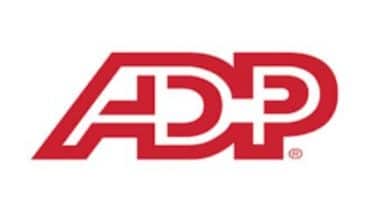Fish farming is unquestionably a more profitable investment if you are planning a commercial fish farming business. A competent business plan is required before starting a commercial fish farming business. To begin a fish farming business, market analysis and a business plan are required. Before you begin, you should conduct extensive market research. Then, examine the local market trends and demand for the particular type of fish. To make a long tale short, let us go through how you might build your fish farming business plan in Nigeria.
What is Fish Farming?
Fish farming business in Nigeria is the practice of growing fish. Many people in Nigeria who participate in fish farming do it for profit. Catfish farming is practised by approximately 80% of Nigerian fish farmers. Catfish is the most commonly employed variety of fish in Nigerian aquaculture.
Fish farming is a business that anyone can start. It can be very profitable if you know what you’re doing, or it can be a loss-making endeavour if you don’t.
The advantage of fish farming over other types of farming is that it is not seasonal. It is possible to accomplish it both during the rainy and dry seasons. Fish farming business is also possible in all cities in Nigeria including, towns, and villages. This business can be conducted in Kaduna, Abuja, Lagos, Ibadan, Abeokuta, Port Harcourt, Calabar, Benin, Owerri, and other cities in Nigeria.
The main causes of failure in Nigerian fish farming include the quality of fingerlings and other fish seeds, the quality of water, the PH of the water, dissolved oxygen in the water, ammonia, farm cleanliness, turbidity, and so on.
Types of Fish Farming
There are numerous fish species that can be bred for commercial fish farming operations. The sort of fish farming is important in your fish farming business plan. Salmon, carp, tilapia, catfish, and cod are the most frequent fish raised on commercial farms.
#1. Catfish Commercial farming
Catfish are the most suited and profitable commercial fish farming species. A Catfish is in high demand because of its numerous health benefits. These Catfish take 18 months to mature in industrial fish farming, and catfish raised in ponds are smaller than wild catfish. There are various catfish species, the most common of which are blue catfish, channel catfish, and flathead catfish.
#2. Tilapia Commercial farming
Tilapia, like carp and salmon, is a productive fish species appropriate for commercial fish farming. Because of their popularity, these fish are in high demand, and they are high in protein and vitamins. Tilapia fish can grow to be quite huge, depending on their skills. Tilapia fish are tropical kinds that flourish in warm water. The water temperature in the fish should be between 28 and 30 degrees. These fish ponds require close supervision. Tilapia are more disease and parasite resistant. Tilapia fish should be fed a cereal-based diet because they do not eat other fish and are more invasive fish species.
#3. Salmon farming
Salmon is another prominent commercial fish farming type. Chinook and Coho salmon are two other types of salmon. These fish are not disease-resistant; they should be vaccinated to prevent disease, and in extreme situations, they may require further medicine.
#4. Tuna Commercial farming
Tuna are saltwater fish that produce higher revenues in commercial fish farming. This fish type, Tuna, comes in three varieties: bluefin, yellowfin, and albacore. Also, Tuna farming is difficult commercially since these fish are big and very active. Tuna fish are carnivores, which means they devour other fish. Tuna fish are farmed in net pens offshore and in recirculation systems.
#5. Commercial shrimp farming
This has a big Asian market. The most basic cultural method is used in commercial shrimp farming. Shrimp has a huge market demand, and you can start small- and large-scale shrimp farming relatively cheaply and with little effort.
Why You Need a Farming Business Plan in Nigeria
A business plan is required if you want to create a fish farming business or expand an existing one in Nigeria. A business plan will help you secure funds and plan the expansion of your fish farming business to increase your chances of success in Nigeria. Your fish farm business plan should be updated on a yearly basis as your firm grows and evolves.
Fish Farming Business Plan Template in Nigeria
A business plan is required if you wish to start a fish farming business or expand an existing one in Nigeria. Each section of your fish farm business plan template is linked below:
#1. Executive Summary
Your executive summary introduces your business plan, yet it is usually the last component you create because it summarizes each significant section of your plan.
The purpose of your Executive Summary is to instantly pique the reader’s interest. Inform them about the type of fish farm you run and its current status. For example, are you a startup, do you want to expand your fish farm, or do you operate fish farms in multiple markets?
Following that, provide an outline of each of your plan’s succeeding components. Give a quick outline of the fish farming industry, for example. Discuss the type of fish farm you have. Provide information about your direct competitors. Provide an outline of your target audience. Describe your marketing plan in a nutshell. Determine who the essential members of your team are. Also, provide a summary of your financial plan.
#2. Business Analysis
You will describe the type of fish farm you run in your company analysis. The Company Analysis portion of your business plan should give information on the business in addition to defining the type of fish farm you will manage.
Include responses to questions like When and why did you start the business?, What milestones have you reached so far? and what is your legal framework?
#3. Industry Analysis
You must include an overview of the fish farm industry in your industry analysis. While this may appear to be superfluous, it serves several reasons.
To begin, researching the fish farm industry will educate you. It aids in your understanding of the market in which you operate. Second, market research can help you better your approach by identifying market trends.
The third reason for conducting market research is to demonstrate to readers that you are an authority in your field. You accomplish this by conducting the study and incorporating it into your plan.
#4. Customer Analysis
The customer analysis portion of your fish farm business plan must include information about the clients you service and/or anticipate serving. Restaurants, supermarket retailers, and the general public are examples of consumer segments.
As you might expect, the customer segment(s) you select will have a significant impact on the type of fish farm you operate. Grocery retailers, for example, would clearly respond differently to marketing efforts than the typical citizen.
Try to segment your target market based on their demographic and psychographic traits. Include a description of the ages, genders, localities, and income levels of the customers you want to serve in your demographics.
Psychographic profiles explain your target clients’ wants and demands. The better you understand and identify these needs, the better you will be able to attract and retain clients.
#5. Competitive Analysis
Your competitive analysis should identify and prioritize your business’s indirect and direct competitors. Other fish farms compete directly with us.
Indirect competitors are alternatives to direct competitors that customers can purchase from. This includes supermarkets and eateries. You should also disclose such competition.
You should characterize the other fish farms with whom you compete in terms of direct competition. Your direct competition will most likely be fish farms located very near your site.
Provide an overview of their businesses and a list of their strengths and shortcomings for each such rival.
#6. Marketing Plan
A marketing plan has traditionally included the four P’s: Product, Price, Place, and Promotion. Your marketing plan for a fish farm business should include the following:
- Product: Reiterate the type of fish farm company that you documented in your Company Analysis in the product area. Then, describe the precise products you intend to sell. Will you, for example, provide delivery, shipping, gutting and/or preparation, and any other services in addition to a fish farm?
- Price: Write down the prices you intend to charge and how they compare to those of your competitors. Essentially, the product and price portions of your marketing plan present the services you provide as well as their rates.
- Place: The site of your fish farm company is referred to as place. Document your location and explain how it will affect your success. Is your fish farm, for example, near an ocean, a river, a large pond, or another body of water? Discuss how your location could be excellent for your customers.
- Promotions: The promotions section is the final piece of your fish farm marketing plan. You will document how you will drive customers to your location(s) in this section.
#7. Operations Plan
While the previous sections of your business plan described your objectives, your operations plan discusses how you will achieve them. Your operations plan should be divided into two parts.
The first category is Everyday short-term processes, which comprise all of the duties associated with running your fish farm, such as prepping the nets, hauling in the fish, cleaning the fish, weighing and pricing the daily catch, and updating inventory and price.
The second type of goal is long-term goals, which are the milestones you aim to reach. These could include the dates on which you want to catch your XXth fish or exceed $X in earnings.
#8. Management Team
A competent management staff is required to demonstrate your fish farm’s potential to succeed. Highlight the backgrounds of your key individuals, stressing the talents and experiences that demonstrate their aptitude to create a company.
You and/or your team members should ideally have firsthand experience managing fish farms. If so, emphasize your experience and skills. However, you should also highlight any experience that you believe will assist your business to succeed.
#9. Financial Plan
Your 5-year financial statement should be broken out monthly or quarterly for the first year and then annually in your financial plan. Your income statement, balance sheet, and cash flow statements are all part of your financial statements.
#10. Appendix
Attach your complete financial predictions to your plan as an appendix, along with any supporting materials that make your plan more attractive. For example, you may include a lease for your boat and equipment, as well as a description of the many varieties of fish you would be farming.
What is the Most Profitable Fish Farming Business?
Which species is the most profitable for fish farming? Tilapia fish farming is highly profitable because this species is widely sold and consumed, frequently as shrimp or salmon.
How Much Can I Use to Start Fish Farming in Nigeria?
A small-scale fish farm will require a capital of $2,000,000, while a large-scale farm will require a capital of #5,000,000. This money will primarily be utilized to purchase fish feed, trampoline ponds, and treatment.
How Profitable is Fish Farming in Nigeria?
Fish farming is an extremely profitable business in Nigeria. Many fish farmers in the country profit handsomely from the sale of fish and fingerlings each month. Raising tilapia and other types of fish can provide substantial revenue because fish farming is a highly profitable business.
How Many Times Should Catfish Be Fed in a Day?
Fingerlings are fed 2% to 5% of their body weight per day, divided into two or more feedings, whereas broodfish are fed 1% to 2% of their weight per day. During the warmer months, however, most catfish producers feed their fish once daily to keep them satiated, seven days a week.
Can I Start Fish Farming with 50k?
If you wish to start farming catfish on a small scale, you can start a small-scale fish farm with as little as 50,000 ($128). You can start with nothing if you wish to work in processing and packaging. You can get the fish from folks who smoke the fish if you bargain with them.
Summary
Creating a business plan for your Nigerian fish farming venture is a worthy endeavor. If you follow the blueprint above, you will be a true expert by the end. You will have a thorough understanding of the fish farm industry, your competitors, and your customers. You will have created a marketing plan and will fully comprehend what it takes to start and grow a profitable fish farm.
- BUSINESS FARMING: Profitable Ideas on How to Start a Small Farm Business
- Become a business mentor
- Business Food Ideas (23 Ideas + How to Start Guide)
- Home Business Ideas with Low Start Up Costs: Get the Top 20 Here (+ Easy Quick Tips)
- Swift Solutions for Launching a New or Expanding an Existing iGaming Business






